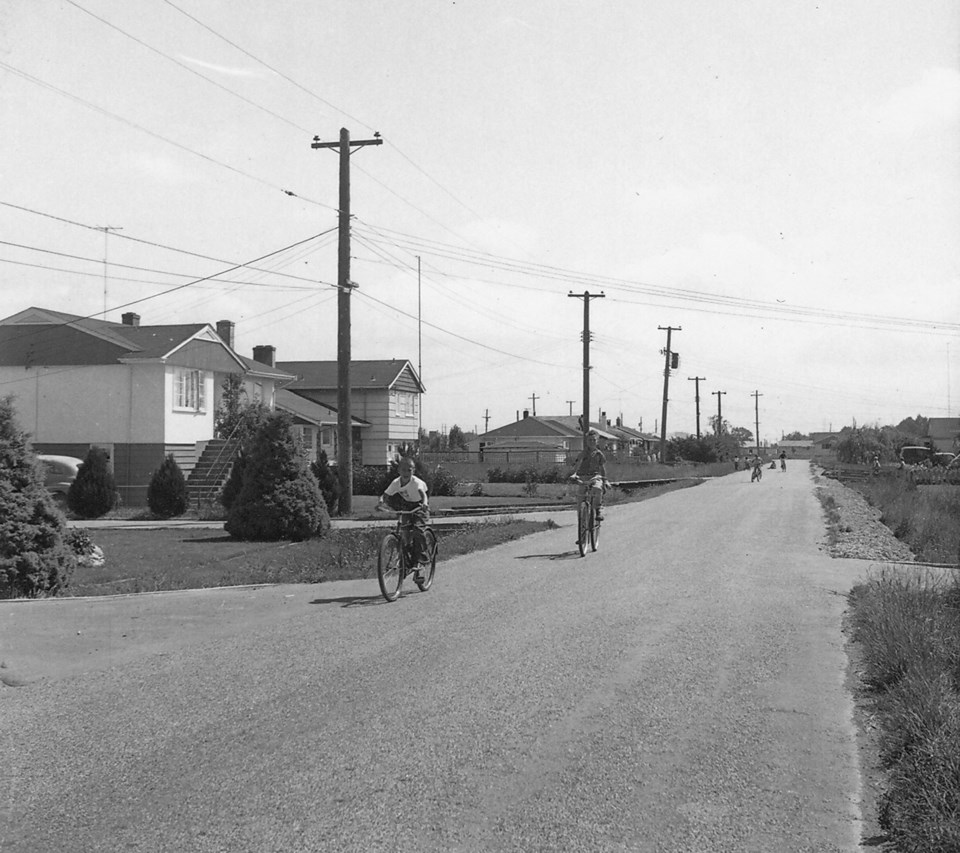It was the photograph of a mundane sight that started me thinking about this.
Searching in Richmond Archives for photos from 1957 showing the Oak Street Bridge under construction, I came across one that included a view of a row of backyards. All had clothes lines with laundry flapping horizontally in the wind. In 1957, electric clothes dryers were a rarity.
That wasn’t the only thing we didn’t have back then, that we take for granted now. In the 1950s, automatic washing machines were found mostly in laudromats. My mother used a wringer washer. Toaster ovens, microwaves, automatic coffee makers and other appliances now filling our homes were like props for a science-fiction movie 60 years ago.
However, my parents did buy a TV in the late 1950s. We got two channels, CBUT and KVOS, and I was allowed to watch The Friendly Giant (my mother’s favourite was Front Page Challenge). It was decades before personal computers would become commonplace, and about the only thing that streamed in those days was music in elevators.
When there were visitors we’d play card games or board games, especially if the weather kept us indoors. Otherwise, we kids were outdoors (a word that came into use in the early 1800s).
I don’t think I’m misremembering when I say there was then much more outdoors to be out in. Yards, empty lots, fields, even the residential streets, became our playground. Always running, jumping, climbing, we must have worn out a lot of shoes.
Our imagination got as good a workout as our legs. The word imagination comes from “imaginor,” Latin meaning to picture oneself. Imagination is the mind’s ability to be creative in an unprogrammed, unrestrained and untamed way.
Our imagination was stimulated not by anything from cyberspace but by what was around us in our own, real space — cost-free.
As kids, we were in close contact with nature (from the Latin “nascor,” to be born), closer than grown-ups could have been. After all, kids are shorter, more flexible, and liable to spend more time on the ground.
In the summer of 1959 we moved from Burkeville to Leslie Road, a couple of streets north of Lansdowne racetrack.
The west side of No.3 Road was then mostly fields cultivated for crops. At the point where Leslie Road meets No.3 Road was a piece of land completely overtaken by wild nature. It was our secret forest.
In reality a hodge podge of small trees and bristly bushes, it worked magic on our imagination, turning us into adventurers and explorers. The days were never long enough.
As I look around the neighbourhood where I now live, I see nature restrained, clipped and tamed. Kids mostly stay indoors.
But I’ll continue to have several oases of wild in the yard, if not for kids then for bees, bugs, butterflies and birds. And I’ll always have laundry flapping on the line.
Sabine Eiche is a writer and art historian (SabineDellaRovere.com)



